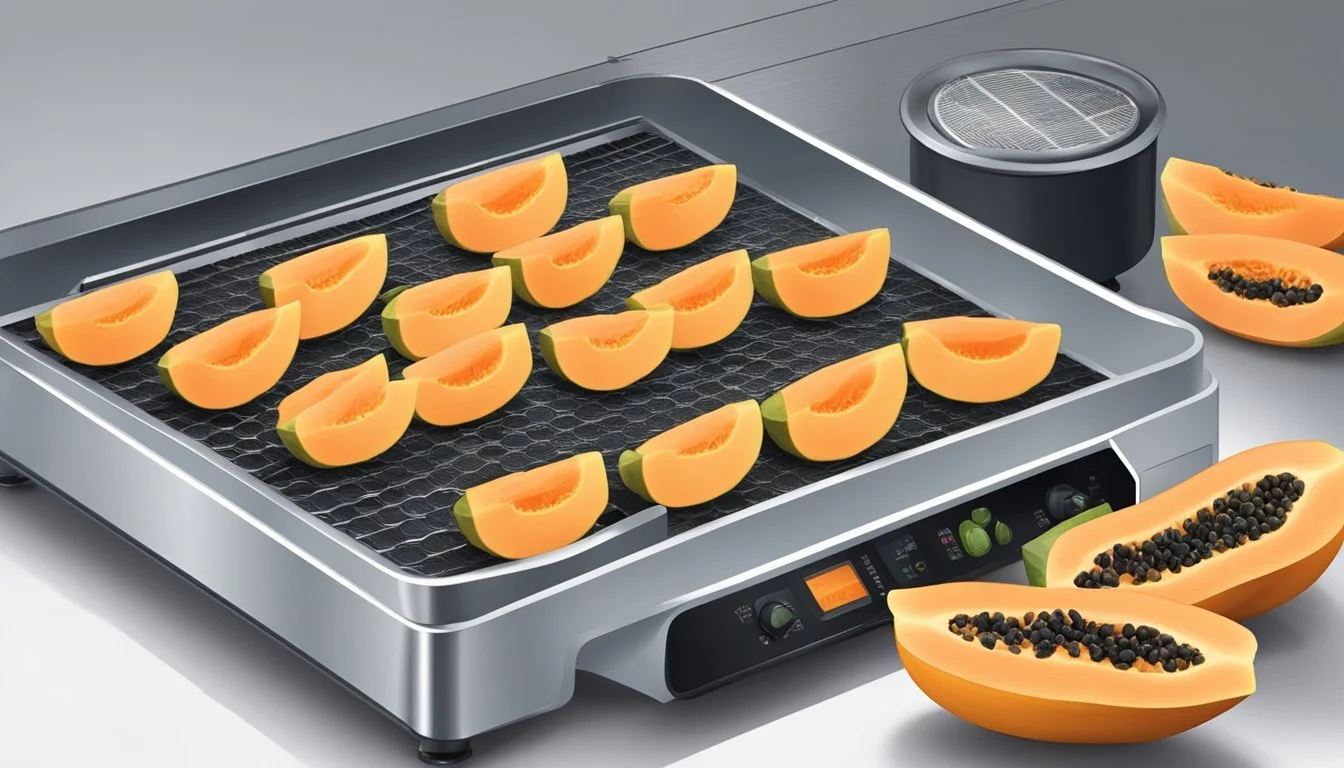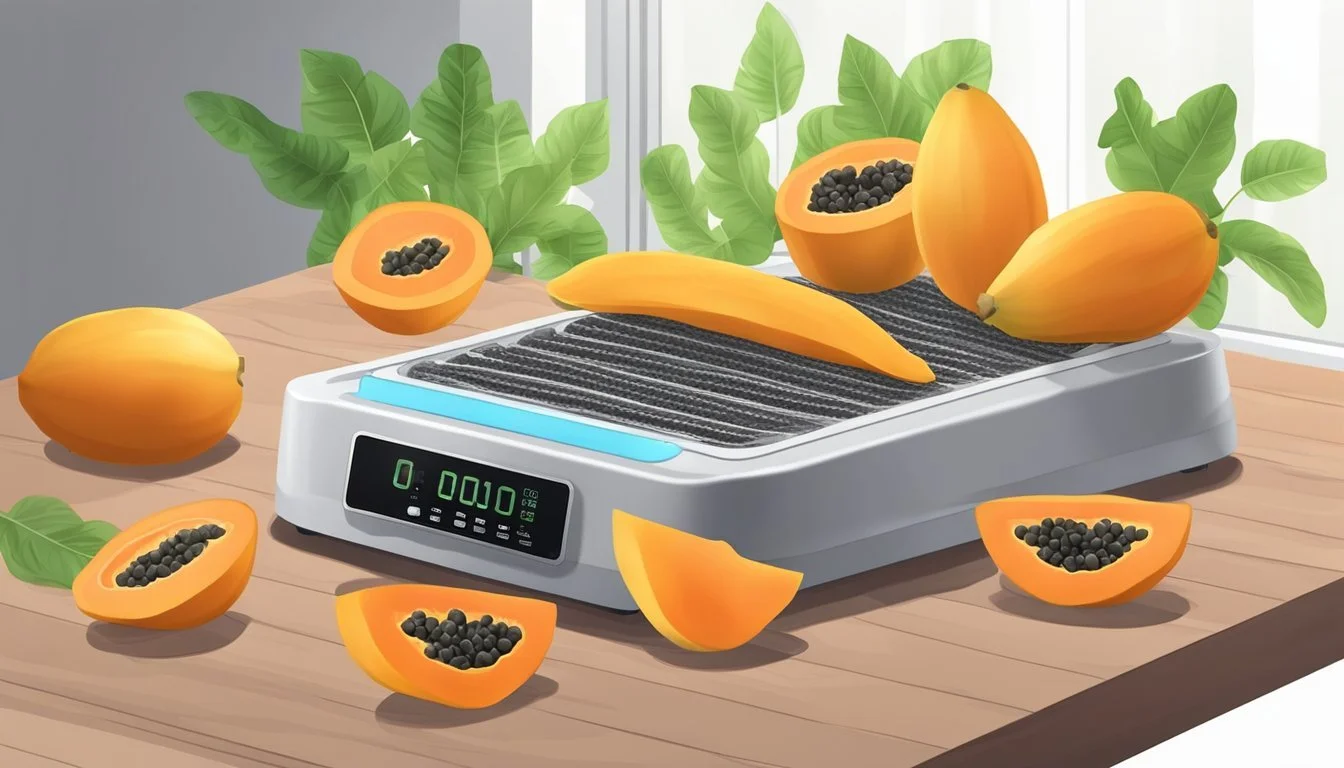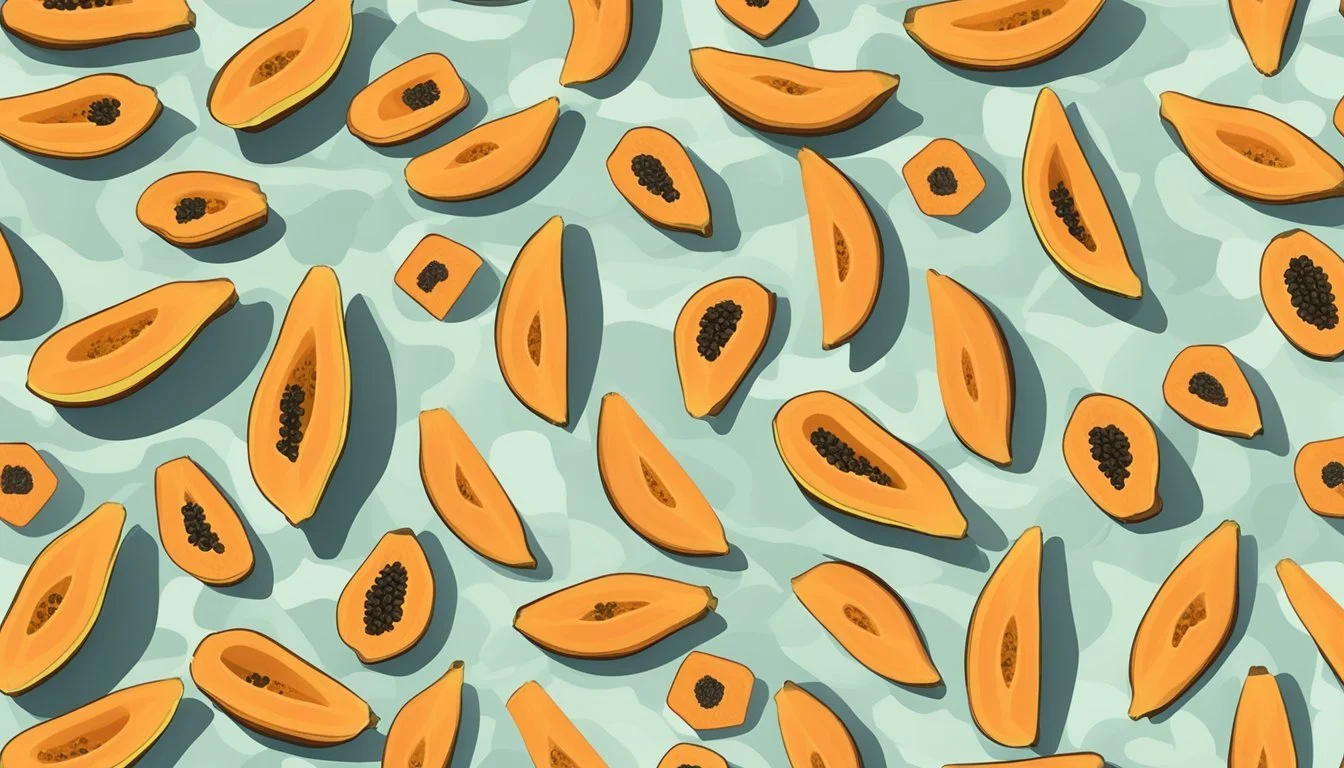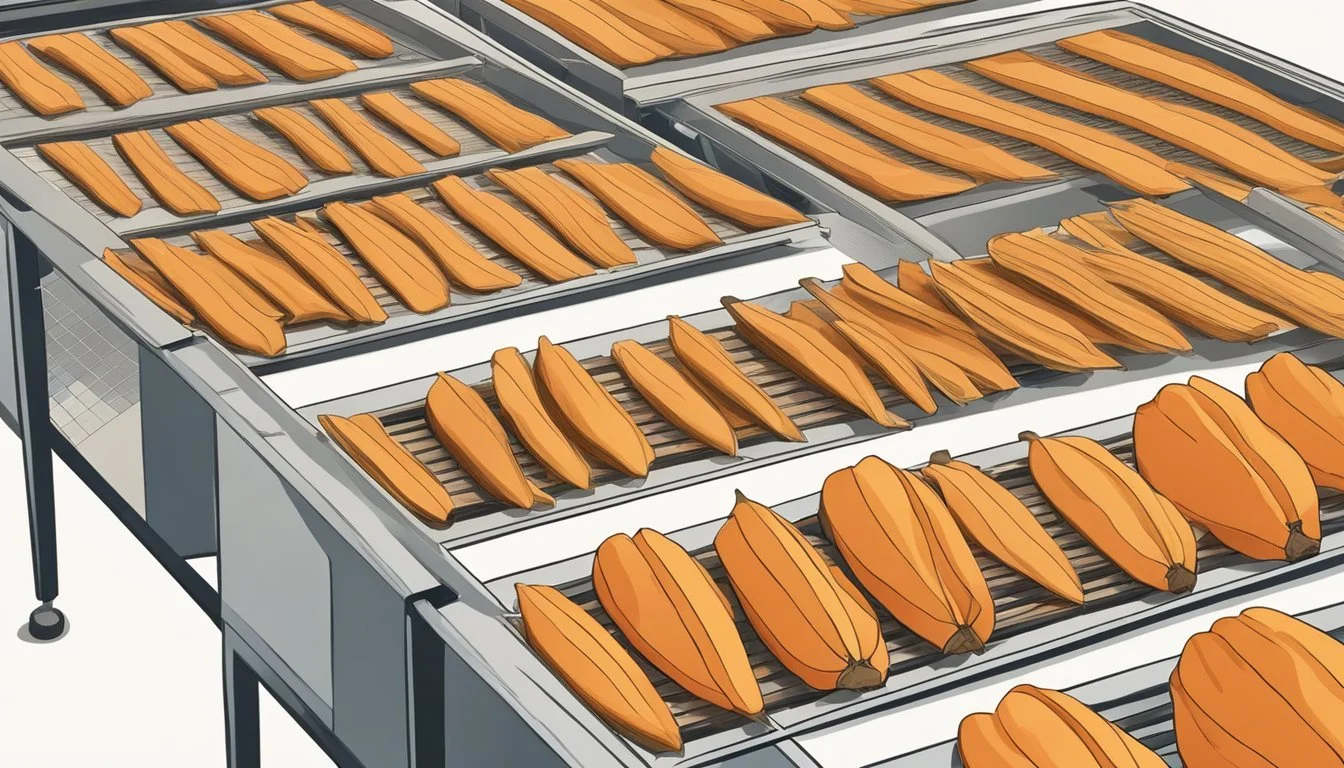How to Dehydrate Papaya?
A Step-by-Step Guide for Preserving Your Fruit
Drying papaya is a wonderful method to preserve the fruit and concentrate its sweet, tropical flavor. Whether snacked on their own or added to dishes such as granola (how long does granola last?), trail mix, (how long does trail mix last?) or baked goods, dehydrated papaya pieces provide both a nutritious treat and a burst of flavor. The drying process also extends the shelf life of the fruit, allowing one to enjoy the taste of papaya far beyond its typical fresh lifespan.
There are several methods for dehydrating papaya, offering flexibility based on equipment availability and personal preference. The use of a dehydrator is a popular method, providing controlled temperatures and consistent air flow, yielding evenly dried fruit (how long does dried fruit last?). Alternatively, an oven can be utilized for drying papaya slices by setting it to a low temperature. For those with access to a consistently hot and dry climate, sun drying is an option.
Preparing the fruit for drying involves washing, peeling, and slicing the papaya into thin pieces, typically around a quarter-inch thick. Removing the seeds is a necessary step before arranging the slices on a dehydrator tray or baking sheet. If desired, one can pre-treat the slices with ascorbic acid to prevent browning, but this step is not essential. The key to successful dehydration is to ensure that the papaya slices are all of uniform thickness and are fully dry to touch before storage.
Preparation of Papaya Slices
Drying fresh papaya gives it a longer shelf life and makes it easier to store and take on the go. Learning how to dry papaya isn't rocket science and with a few tools and the right guidance anyone can dehydrate papaya at home to add to a homemade trail mix.
A food dehydrator will make the task easier but even without the fancy gadgets the food preservation process can be achieved.
The preparation of chopped papaya for dehydration involves selecting quality fruit, ensuring cleanliness, and cutting it into optimal shapes for drying.
Selecting the Right Papaya
It's important to choose a ripe papaya that's both firm and blemish-free. Ripe papayas should yield slightly to pressure, indicating that they are at the peak of sweetness and ready for dehydration. The skin of a ripe papaya typically transitions to an amber or orange hue. Using fresh ingredients is always recommended when drying fruits.
Washing and Peeling
Once the right papaya is selected, one must thoroughly wash the fruit under running water to remove impurities. With a sharp knife or vegetable peeler, carefully peel the papaya skin off, ensuring that all of the outer layer is removed and only the fresh papaya flesh remains.
Slicing the Papaya
For even dehydration, slice the papaya into thin slices or cubes. One can use a knife to cut the papaya into even thin slices, which helps in the uniform drying process.
It's essential to remove the papaya seeds before slicing and to be consistent in thickness to promote even drying. Rinse the chopped papaya and dry off the excess moisture with a towel or leave it on a rack with parchment paper.
Prepping the Papaya for Dehydration
An optional step, that helps prevent bacteria and helps enhance the flavor is to blanch the papaya in boiling water for 1-2 minutes, or brush it with a weak gelatin solution. Alternatively you can spray the papaya with ascorbic acid to help prevent mold, a drop of lemon juice will suffice.
How to Dehydrate Papaya; Drying Methods
Dehydrating papaya effectively requires the right equipment and technique. Each method varies slightly in preparation and drying time.
Using a Dehydrator to Dry Papaya
To use a dehydrator, one first places sliced papaya on dehydrator trays, ensuring pieces are not overlapping to allow proper air circulation.
They then set the dehydrator temperature to 130°F. The dehydration process typically takes around four hours, but one should check periodically as drying times may vary depending on slice thickness and the dehydrator's efficiency.
Dehydrating Papaya in an Oven
If one opts for an oven, one should preheat it to the lowest temperature setting, usually between 140°F to 170°F. The papaya slices are then spaced out on baking trays or cookie sheets lined with parchment paper to prevent sticking.
Drying time in an oven can be longer than using a dehydrator and may take upwards of eight hours. The door ajar allows for continued air circulation.
Sun Drying Process
For sun drying, one places the papaya in a single layer on trays and covers them with netting to protect against insects.
They need to be positioned in direct sunlight, and the ambient temperature should be consistently hot and dry. Sun drying is the most time-consuming method, often taking several days, and requires regular monitoring to prevent spoilage.
Dehydration Process Details
Dehydrated papaya offers a flavorful snack with a concentrated sweetness and chewy texture. Understanding how to properly arrange slices, set the temperature, and monitor the drying time ensures successful dehydration.
Arranging Fresh Papaya Slices on Dehydrator Trays
One should slice the fresh papaya into even, thin pieces, approximately 1/4 inch thick, to ensure consistent dehydration.
It is crucial to lay the slices in a single layer on the dehydrator trays, without overlap, allowing for adequate airflow around each fresh papaya slice. This promotes uniform drying and prevents any moist spots that could lead to spoilage.
Setting the Temperature
A dehydrator should be set at a moderate temperature range of 50-60°C (122-140°F) to effectively dry papaya evenly. This temperature range helps retain the fruit's natural flavor and color while ensuring that it dries thoroughly to achieve the desirable leathery texture.
Monitoring the Drying Time
The duration of dehydration is influenced by the thickness of the slices and the humidity level of the environment.
The total drying time can range between 6 to 24 hours. One should check the papaya periodically, as over-dehydration can result in a brittle texture, while under-dehydration can leave slices too moist, and prone to mold. Papayas should not be stored until completely dry.
Fully dehydrated papaya should feel leathery and without any perceptible moisture when touched.
Post-Dehydration Steps
After the dehydration process, one must take specific measures to ensure that the quality of the dehydrated papaya is preserved. Correct cooling and storage are vital to maintain flavor, texture, and nutritional value.
Cooling Down Dried Papaya
Once the dehydrated papaya is removed from the dehydrator, it should be placed in a cool, well-ventilated area to cool completely.
Cooling is crucial as it prevents condensation from forming when the papaya is transferred to storage containers, which could lead to spoilage.
Dry Papaya Storage Techniques
For storing dehydrated papaya, select an airtight container to protect it from moisture and pests. Proper storage consists of the following steps:
Check Dryness: Ensure that the dried papaya pieces are thoroughly dry to avoid mold growth.
Airtight Containers: Use glass jars, vacuum-sealed bags, or plastic containers with tight-fitting lids.
Cool and Dark Place: Store the container full of dried papaya in a cool, dark area away from direct sunlight, such as a pantry or cupboard.
Label and Date: Clearly label the container with the content and date of dehydration to keep track of the shelf life.
Regular Checks: Periodically check the dried papaya for signs of moisture or spoilage.
The shelf life of dehydrated papaya can be several months when stored correctly. A dry, cool, and dark place free from temperature fluctuations is ideal for prolonging freshness and preventing the growth of microorganisms.
Serving Suggestions and Usage
Once you know how to dehydrate papaya, you will need some inspiration on how to make use of your preserved store.
Dehydrated papaya offers a versatile ingredient for various culinary applications, ranging from a convenient great snack option to an integral component in a multitude of recipes.
Dried papaya has a sweet, concentrated flavor that provides a tropical twist to recipes and chewy texture adding a unique dimension to both sweet and savory dishes.
Incorporating Dehydrated Papaya into Recipes
In the realm of baking, dehydrated papaya can be chopped up and mixed into batter or dough for cakes, cookies, and muffins.
Dried papaya imparts a tropical sweetness to the baked goods. As a topping, the papaya can be rehydrated slightly and added to salads or dessert pies for an extra layer of flavor.
Smoothies can also benefit from dried papaya; it can be rehydrated in a liquid base to contribute natural sweetness and a nutrient boost. in terms of smoothies, one can also dehydrate papaya puree and blend the dried puree into papaya powder to add conveniently.
Alternatively pouring this fresh papaya puree onto a dehydrator tray can result in a sheet of sticky fruit known as fruit leather. (how long does fruit leather last?)
The fruit leather can be rolled into tubes and takes up very little space. Fruit leather is a popular hiking treat for those who need a sugary boost to get up that last leg of the mountain.
Healthy Snack Ideas
When it comes to healthy snacking, dried papaya shines as a standalone option or as part of a homemade trail mix. Combining dry papaya with nuts (how long do nuts last?) and other dried fruits creates a balanced snack with a good mix of sweetness, texture, and nutrition.
For a quick energy boost, the papaya pieces can be sprinkled over granola or yogurt, providing a chewy contrast to the crunchy granola.
Health Benefits and Nutrition
Papaya is a fruit acclaimed for its nutritional value and health benefits. When dehydrated, papaya retains most of these benefits, making it a convenient and healthy snack option.
Dried papaya is an excellent source of vitamin C, which plays an essential role in immune function. It is also rich in vitamin A, crucial for maintaining healthy vision, skin, and mucous membranes.
Additionally, papaya contains potassium, an electrolyte that helps to manage blood pressure and heart health.
Dehydrating papaya concentrates its nutrients, making it a potent source of antioxidants. Antioxidants help combat oxidative stress and may play a role in reducing inflammation.
The process of dehydration preserves the fresh papaya's content of antioxidants, which can protect the body from the onset of various diseases.
Here is a brief overview of the nutritional content of dried papaya:
Antioxidants: Protect cells from oxidative damage
Vitamin C: Supports the immune system
Vitamin A: Promotes healthy eyes and skin
Dietary Fiber: Aids digestion
In summary, dried papaya is not only a tasty treat but also imbues the diet with valuable vitamins, minerals, and antioxidants.
Common Papaya Dehydration Mistakes
Overlapping Slices: Slices should not touch each other to ensure even airflow and dehydration. Place them in a single layer with space in between.
Uneven Cutting: If you cut the papaya into uneven pieces it leads to inconsistent drying times. Aim for uniform, 1/4-inch thick slices for best results.
Incorrect Temperature: Setting the dehydrator too high can cook the fruit, while too low can prolong drying time and increase the risk of spoilage. The ideal temperature range is around 135°F (57°C).
Insufficient Drying Time: Dried papaya should be devoid of moisture to the touch to prevent mold. Dehydrate for 6-12 hours, checking periodically for dryness.
Dehydrated Papayas; Preservation and Shelf Life Queries
Sealing and Storage: Once dehydrated, papaya should be stored in airtight containers, such as a plastic container with a good seal, a glass mason jar, or a vacuum sealed bag to preserve its shelf life and prevent moisture re-entry.
Shelf Life: Properly dried papaya can last for several months. If signs of moisture or mold appear, discard the affected dried papaya pieces.
Rehydration: If one desires to rehydrate dehydrated papaya, simply soak it in water for a few hours before use.
Ripe Fruit Selection: For optimal flavor and texture, always start with ripe fruits to attain a sweeter and more nutritious end product.





